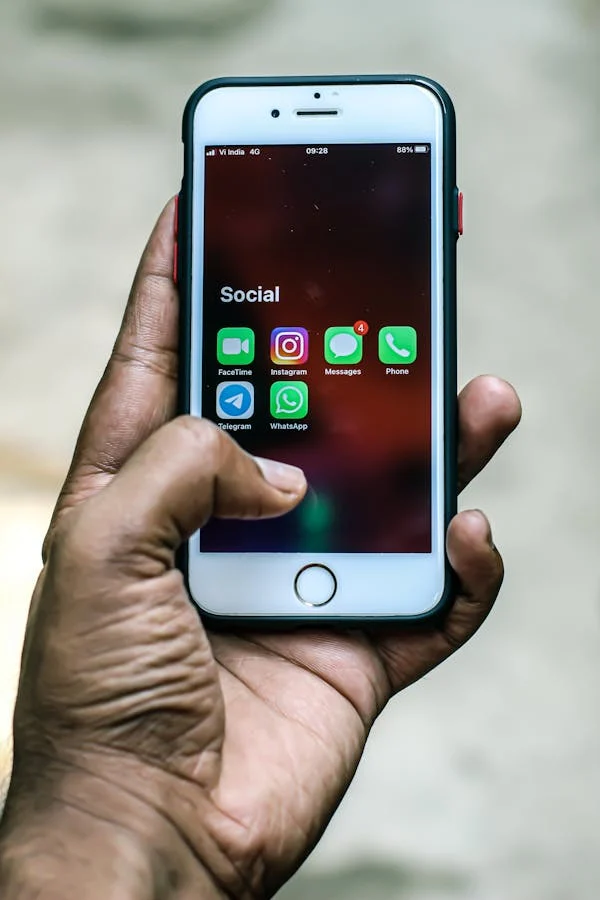Top Smartphone Photography Tips: Capture Like a Pro
Smartphone cameras have come a long way, and today, they are capable of taking stunning photos that rival traditional cameras. Whether you’re a hobbyist looking to improve your skills or a social media enthusiast aiming for top-notch content, mastering smartphone photography is easier than ever.
Here are some expert tips to help you capture breathtaking photos like a pro:
1. Clean Your Lens
It may seem simple, but this step is often overlooked. Dirt, fingerprints, or smudges on your lens can affect the sharpness of your photos. Before shooting, give your camera lens a quick wipe with a microfiber cloth to ensure clarity in your shots.
2. Use Natural Light
Lighting is crucial in photography, and natural light is your best friend. Whenever possible, shoot in well-lit areas or near windows for soft, flattering light. The golden hour—shortly after sunrise or just before sunset—offers warm, diffused light that can elevate your photos.
If you’re shooting indoors, try to avoid harsh overhead lights. Instead, place your subject near a light source, like a window, to create even lighting. When shooting portraits, positioning your subject facing the light can help highlight their features.
3. Tap to Focus
Most smartphone cameras feature autofocus, but you can often get a more precise shot by tapping on the screen where you want the camera to focus. This is especially helpful when capturing close-up shots of subjects like flowers, food, or small objects.
4. Use the Rule of Thirds
The rule of thirds is a classic photography principle that involves dividing your image into a 3×3 grid. Place important elements of your composition along these lines or at their intersections. Most smartphone cameras have a grid option in the settings to help you apply this rule easily.
By following the rule of thirds, you create a more dynamic and balanced photo. Instead of centering your subject, try positioning it to the left or right, leaving space in the direction they are facing to add depth and interest.
5. Experiment with Different Angles
Don’t just settle for eye-level shots. Play around with different perspectives—shoot from above, below, or from the side to create unique compositions. A low angle can make your subject appear larger and more imposing, while a high angle can give an overview of the scene and add context.
Try shooting through objects, like glass or foliage, to add texture or framing elements to your image. It can make your photos feel more artistic and creative.
6. Use the HDR Mode
High Dynamic Range (HDR) is a feature that can significantly improve the quality of your photos, especially when you’re capturing scenes with contrasting light, like sunsets or cityscapes. HDR mode helps balance the exposure in the darkest and lightest areas of your photo, ensuring more detail and color throughout.
When using HDR, make sure your phone is stable, as the camera takes multiple exposures and combines them into one image. For best results, use a tripod or steady your hand.
7. Edit Your Photos
Once you’ve taken your shot, don’t hesitate to enhance it with editing. There are numerous free and paid apps, like Snapseed, Lightroom, or VSCO, that allow you to adjust exposure, contrast, saturation, and more.
When editing, try to keep the enhancements subtle to maintain the natural look of the photo. Over-editing can result in unrealistic images that may detract from the subject. Adjusting brightness, cropping, and adding a slight vignette can go a long way in enhancing the mood of your shot.
8. Explore Portrait Mode
Many modern smartphones have a “Portrait” mode, which uses software to create a shallow depth of field, blurring the background while keeping your subject in sharp focus. This is ideal for portraits or any situation where you want to isolate the subject and eliminate distracting elements.
When using portrait mode, ensure your subject is well-lit, and avoid backgrounds that are too busy, as they can compete with the subject. A clean, simple backdrop will allow your subject to pop.
9. Avoid Digital Zoom
Although smartphones offer zoom capabilities, using digital zoom can lead to pixelated and blurry images. Instead of zooming in, try physically moving closer to your subject. If you need to capture distant objects, consider investing in a clip-on lens or an external zoom lens for your smartphone.
10. Stabilize Your Phone
Shaky hands can lead to blurry photos, particularly in low-light situations. To prevent this, hold your phone with both hands and keep your elbows tucked close to your body for added stability. If you’re shooting in a low-light environment or need to keep your camera still for a long exposure, consider using a tripod or resting your phone on a stable surface.
11. Take Advantage of Burst Mode
Burst mode allows you to capture multiple frames per second, making it perfect for fast-moving subjects or action shots. Whether you’re photographing pets, children, or sports events, burst mode increases your chances of getting the perfect shot, as it captures a series of images that you can sift through later.
12. Keep Your Subject in Mind
Finally, always consider the subject of your photo. Whether it’s a person, landscape, or still life, think about how you can best highlight the subject’s features. Use leading lines, symmetry, or contrasting colors to create a more visually striking image. If your subject is a person, engage with them, encourage natural expressions, and create a comfortable environment to capture authentic moments.







